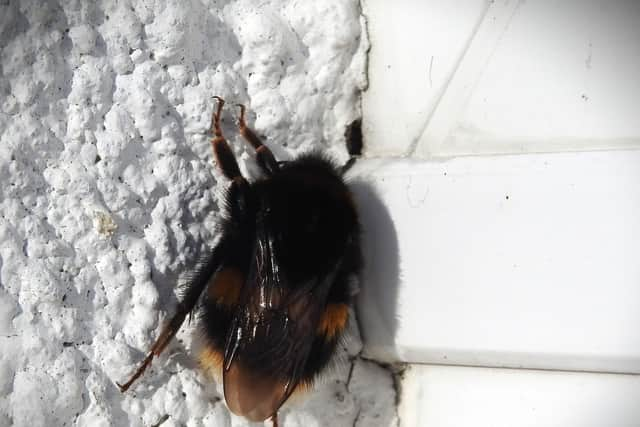On the Wildside: Bumblebee Queens emerge from hibernation
and live on Freeview channel 276
This week however, a big queen landed to soak up the early sunshine whilst basking in a sunny, sheltered spot on the house wall. This was one of our ‘big bumblebees’ and in this case, a huge (for bumblebees) queen buff-tailed. This species is potentially active throughout the winter with weather getting warmer and especially so in southern parts of the country.
There are records of nests becoming active from late autumn onwards, and in gardens or parks, winter-flowering bushes such as mahonias are important for the survival of these early bees. However, my bumblebee spotted this week was behaving more typically. In this case, the lifecycle starts with the queen’s emergence from her winter slumbers.
Advertisement
Hide AdAdvertisement
Hide AdSo, in spring, as rising temperatures begin to wake the queen bumblebee out of her solitary hibernation deep in the earth, she will have spent the whole winter underground. During this time she has used up her energy reserves of stored body fat. On first emergence, she feeds on nectar drunk from flowers, as she to gain vital energy. Once her batteries are effectively recharged, the queen begins the search for a suitable nest site, which will often be a hole in the ground, in rough, tussocky grass, in bird boxes and sometimes under garden sheds.


Bumblebees will also nest in piles of brash or under old, broken plant-pots, and so you need to be careful not to inadvertently disturb their nests if giving the garden a spring clean! These bees are non-aggressive and totally beneficial, so something to be encouraged.
The buff-tailed bumblebee or large earth bumblebee (or bombus terrestris to give it the scientific name) is one of our most abundant bumblebee species and widespread throughout Europe. They are even used for pollination of greenhouse crops around the world and are now found even where they are not native, apparently as far away as Tasmania.
Professor Ian D. Rotherham, researcher, writer & broadcaster on wildlife & environmental issues, is contactable on [email protected]; follow Ian’s blog (https://ianswalkonthewildside.wordpress.com/) and Twitter @IanThewildside